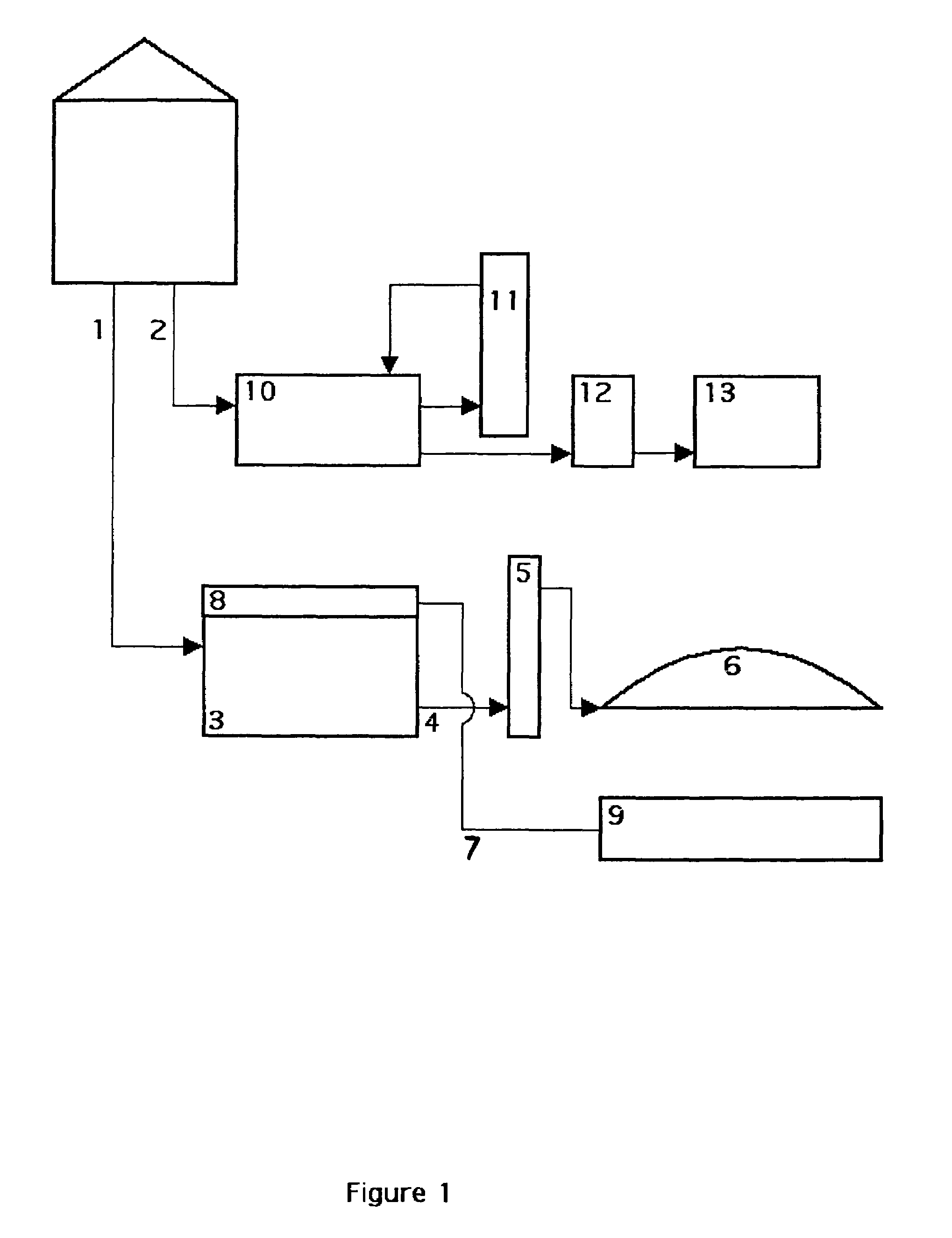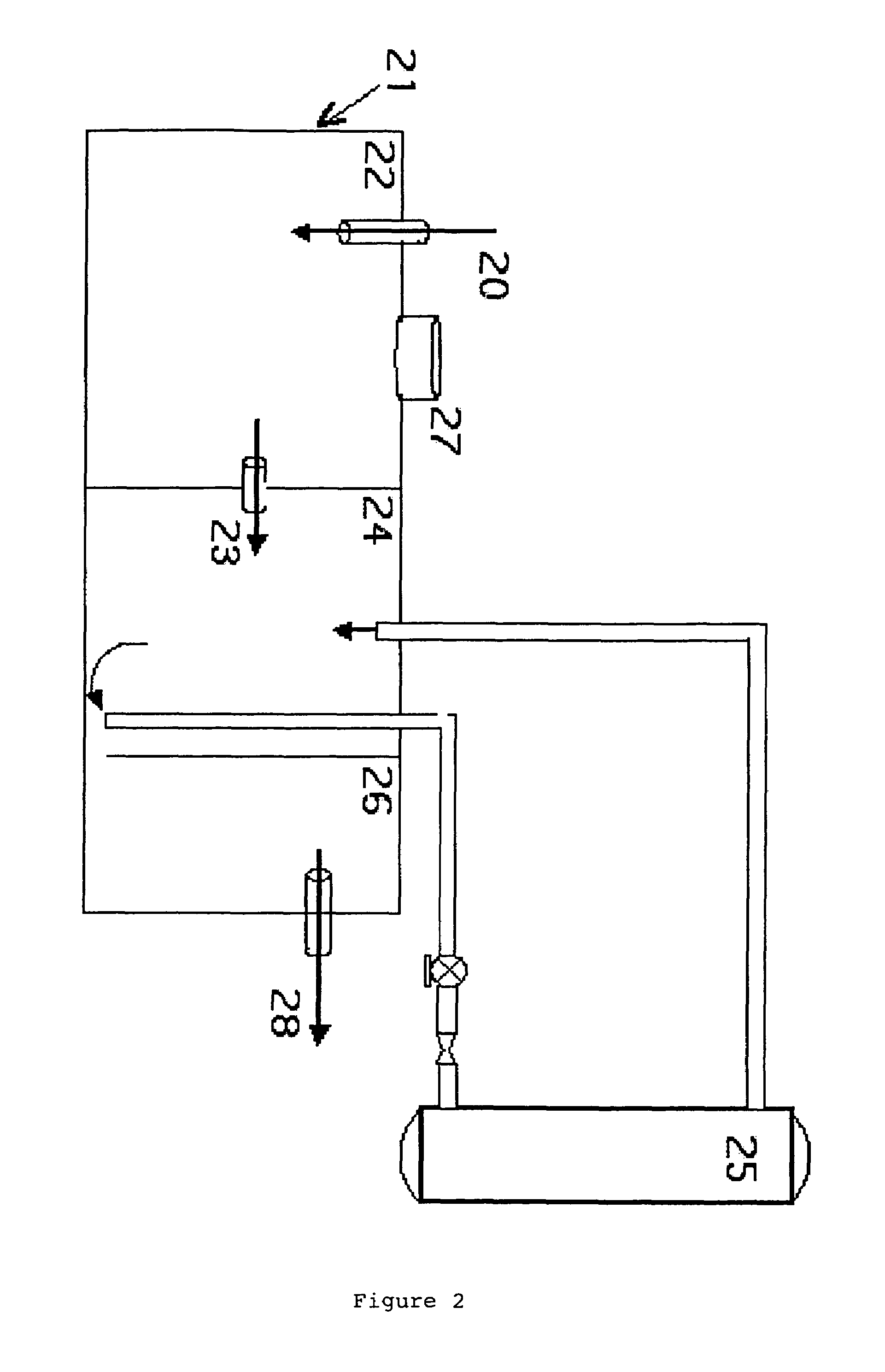System and method for reducing wastewater contaminants
a wastewater treatment and wastewater technology, applied in the field of wastewater treatment, can solve the problems of limited background art in wastewater treatment and no low-cost technology for removing nitrates, and achieve the effect of reducing nitrogen, phosphorus, and/or solids
- Summary
- Abstract
- Description
- Claims
- Application Information
AI Technical Summary
Benefits of technology
Problems solved by technology
Method used
Image
Examples
Embodiment Construction
)
[0028]We describe a simple system to segregate toilet and kitchen waste discharges from the “gray water” wastewater discharged from other plumbing fixtures (non-toilet, non-kitchen wastewater) using totally separate sewer-plumbing systems. A basic aspect of this invention is to separate high nitrogen and phosphorous wastes from the majority of a domestic or other waste stream. Following separation, the non-toilet non-kitchen waste stream is treated as described below for release to the environment. No liquid toilet or kitchen waste need be discharged into the ground, aquifers, or local bodies of surface water. Toilet and kitchen waste is captured in a separate non-discharging tank for storage and treatment as a method for nitrogen, phosphorous, pathogen, and / or solids reduction. Solids present in a toilet and kitchen waste stream include contaminants are solids including fats, oils, and grease. Further, the overall waste stream may include pathogenic contaminants, as well as househ...
PUM
| Property | Measurement | Unit |
|---|---|---|
| volume | aaaaa | aaaaa |
| wavelengths | aaaaa | aaaaa |
| wavelengths | aaaaa | aaaaa |
Abstract
Description
Claims
Application Information
 Login to View More
Login to View More - R&D
- Intellectual Property
- Life Sciences
- Materials
- Tech Scout
- Unparalleled Data Quality
- Higher Quality Content
- 60% Fewer Hallucinations
Browse by: Latest US Patents, China's latest patents, Technical Efficacy Thesaurus, Application Domain, Technology Topic, Popular Technical Reports.
© 2025 PatSnap. All rights reserved.Legal|Privacy policy|Modern Slavery Act Transparency Statement|Sitemap|About US| Contact US: help@patsnap.com



